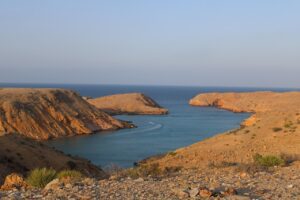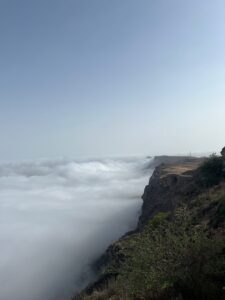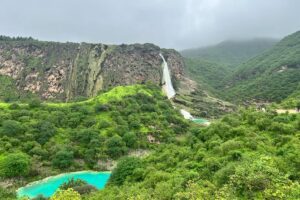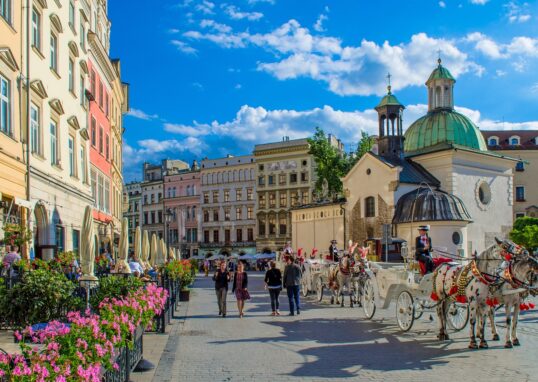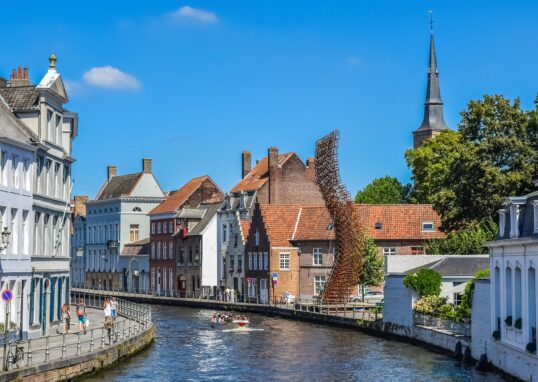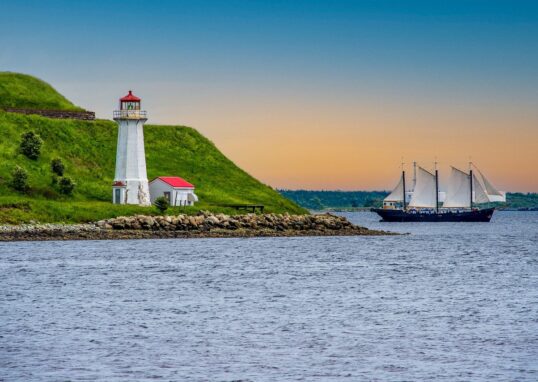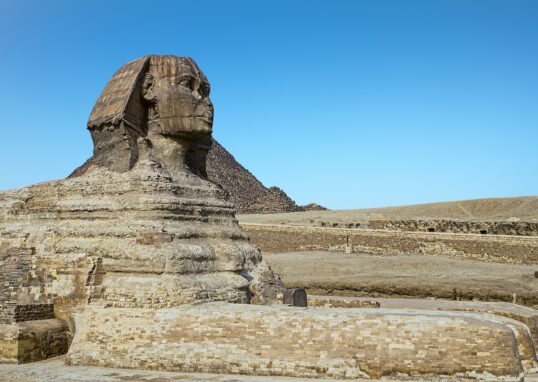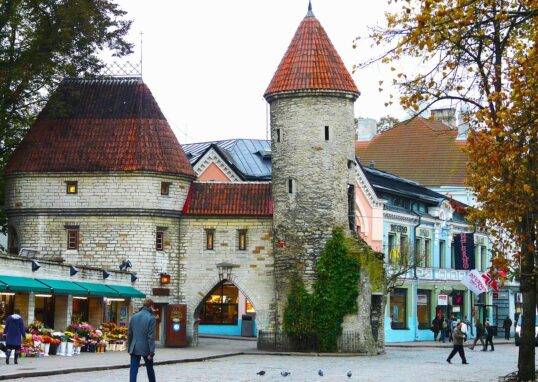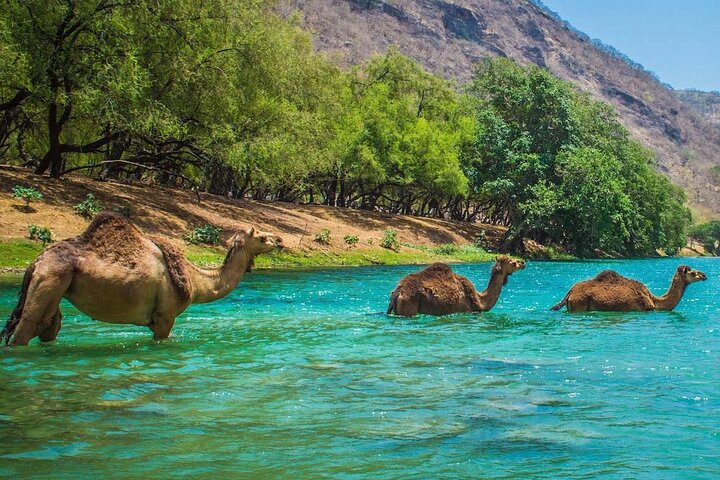
Dhofar Khareef – The Monsoon Magic of Oman
Dhofar is a beautiful town in southern Oman. It is famous for its unique monsoon period, Khareef. The natural occurrence takes place between the months of June and September every year. During this time, the desert mountains of Dhofar turn green and foggy. The climate is cool, and the landscape looks like a tropical paradise. The Khareef season is arguably the most magical of all times of the year in the Arabian Peninsula. The time has thousands of visitors from Oman and other neighboring countries like the United Arab Emirates, Saudi Arabia, and Yemen. There are also thousands of foreign tourists visiting to catch this Middle Eastern oddity. The capital of Dhofar is Salalah, which becomes the center of all attraction during this season. The region also has other tourist points like Taqah, Mirbat, Ayn Khor, Wadi Darbat, and Mughsail Beach. All the above are enveloped by green hills, waterfalls, and fog during Khareef.
Understanding the Khareef Season 
Khareef is the term used for the month of autumn in Arabic, yet the Dhofarians apply it to signify the monsoon season. The Indian Ocean southwest monsoon winds also carry water and clouds along the Dhofar coast. The temperature dips from over 40°C in summer to 20–25°C, which becomes cool and refreshing. Unlike heavy monsoon rains in South Asia, Dhofar’s Khareef is light drizzle and mist. The mountains are wrapped in fog, and everywhere a romantic and mystical environment prevails. This light rain waters the earth and fills the wadis (valleys) with water and creates streams and waterfalls everywhere.
The City of Salalah – The Heart of Dhofar
Overview
Salalah is the capital of Dhofar Governorate and the main tourist destination for Khareef. It is located by the coast of the Arabian Sea and bordered by valleys and mountains. Salalah is famous for its frankincense trees, banana plantations, and white beaches.
Main Attractions in Salalah
Al Baleed Archaeological Park
This UNESCO World Heritage Site is one of the most important historic places in Salalah. It was once an old frankincense port city. The visitors can walk through the archaeological ruins of the ancient city, see the ancient city walls, and explore the Museum of the Frankincense Land, which tells us about Oman’s trade history.
Al Husn Souq
This old souk is one of the oldest in Dhofar. Here, tourists can buy frankincense, perfumes, silver jewelry, and Omani handicrafts. The traditional and warm atmosphere of the souk makes you experience the hospitality of the Omanis.
Salalah Beaches
Salalah beaches are peaceful and clean. During Khareef, the sea becomes foggy and the beach surreal. Al Haffa Beach and Al Mughsail Beach are among the most popular beaches to swim, picnic, and watch the sunset.
Sultan Qaboos Mosque
This mosque in the city center is one of the most beautiful religious structures in Oman. White marble design, golden domes, and peaceful interior amaze travelers from all over the world.
Natural Wonders of Dhofar During Khareef
Wadi Darbat
Wadi Darbat is one of the most stunning nature valleys of Oman. In Khareef, it becomes a paradise of falling waterfalls, green meadows, and foggy cliffs. There are small lakes scattered throughout the valley, and wild camels roam freely. Travelers can boat in the wadi or picnic near waterfalls. The main waterfall, which cascades from a height of about 100 meters, is really an eye-catcher in the monsoon.
Ayn Khor and Ayn Athum
They are natural springs that flow all year round in Khareef. Ayn Khor, situated around Salalah, is surrounded by palm trees and green hills. Ayn Athum, which sits along Taqah, boasts a wide waterfall and scenic scenery. Both springs are great for short walks, family visits, and photo ops.
Jebel Samhan
Jebel Samhan is one of the tallest mountains in Dhofar, its summits rising more than 2,000 meters above sea level. It has breathtaking scenery of the valleys and the Arabian Sea. During Khareef, the mountain is covered with fog and grass.
Mughsail Beach
This is a renowned beach for its blowholes—natural openings in the rocks that splash water high into the air when waves break underneath. During Khareef, the blowholes are more energetic with the churning sea, offering a good natural show.
Taqah Castle
Taqah is a seaside village east of Salalah. Its famous Taqah Castle was built in the 19th century and follows classic Omani architecture. The castle has since become a museum containing old tools, arms, and household items.
Mirbat
Mirbat is yet another ancient town, situated some 70 kilometers east of Salalah. It used to be an important center for frankincense and horse trade. Tourists can see old stone buildings, the Mirbat Castle, and the grave of Bin Ali, an Islamic scholar who was famous for his writings.
The Culture of Dhofar
Traditional Life and People
Residents of Dhofar are renowned for their hospitality and cultural heritage. Many continue to lead a simple life, embracing nature and hospitality. Families gather outdoors in Khareef to spend time amidst the pleasant climate and dine under foggy trees. The local traditional dress includes the Omani dishdasha for males and colored Abayas and scarves for females. Music and dance are also part of festivities.
Frankincense Heritage
Dhofar is the frankincense land, a fragrant gum resin that has been cultivated and traded for millennia. The Frankincense Trail, a UNESCO World Heritage route, ties together ancient ports and trading sites throughout Dhofar.
Khareef Festival – The Celebration of Monsoon
The Salalah Tourism Festival, commonly known as the Khareef Festival, is the highlight of the season. It usually takes place between mid-July and late August. The festival includes cultural performances, food stalls, concerts, and sporting events. Local handicrafts are presented by local artisans, and families enjoy rides, amusements, and Omani delicacies like shuwa (braised meat) and mashuai (grilled kingfish).
Wildlife and Nature
Khareef’s wet and chilly climate attracts many animals and birds into Dhofar. You can see gazelles, camels, and ibex grazing in the fields. Eagles, falcons, and the shy Arabian leopard can be spotted in the mountains. Dolphins, sea turtles, and multicolored fish adorn the beaches. Nature lovers and photographers are drawn to Dhofar as the best destination to discover the region’s beauty and variety.
🌧️ Surrounding Places of Dhofar Khareef – A Journey Through Misty Wonders
Dhofar is not only Salalah. There are many surrounding destinations with waterfalls, valleys, caves, and ancient towns beyond sight around this city. During the Khareef season, all the destinations turn green, lush, and vibrant. The air cools, and mountains misty. The roads get scenic and enigmatic, perfect to explore.
Wadi Darbat – The Green Paradise
Wadi Darbat is one of the most visited and photographed places near Salalah. It lies about 30 kilometers to the east of the city. Wadi Darbat is a green hill paradise, featuring flowing waterfalls and small lakes during Khareef. The valley is wide and overgrown with tall grass, acacia, and palms. The fragrance of fresh air is sweet, with mist hanging amidst the trees. The Darbat Waterfall is the most famous spot, which falls down from a steep cliff. In heavy rain, the waterfall is even wider, with a deafening and calm noise. Travelers enjoy a boat trip on the serene waters of the wadi. Tea, fresh coconuts, and corn are sold close to the picnic areas by small locals. Camels and cows are free to wander about in the valley, which further beautifies the region.
Taqah – A Historical Coastal Town
brief drive from Wadi Darbat is Taqah, a town rich in history and culture. It is some 35 kilometers east of Salalah. Taqah is famous for Taqah Castle, built in the 19th century. Taqah Castle has high towers and coral stone and lime walls. In the castle, there are displays of Omani traditional furniture, pottery, and weapons. Taqah Beach is quite lengthy, some several kilometers. It is clean and quiet. The sea breeze blends with the scent of wet grass from nearby mountains. People take their kids to the beach for picnics, especially in Khareef.
Mirbat – The Old Port of Frankincense
Around 70 kilometers to the east of Salalah is Mirbat, an old coastal town in Oman. Mirbat was a functioning port in ancient times where traders exchanged frankincense, horses, and spices with India and East Africa. The old town still has stone houses with wooden doors that are covered in intricate patterns. The Mirbat Castle, built by the sea, has tales of war and trade. You can walk down narrow streets and feel like you are in the past.
Ayn Razat – The Garden Spring
Only 15 kilometers from Salalah, Ayn Razat is a top picnic spot of Dhofar. It is a natural spring located at the foot of Qara Mountains. The site is a ring of gardens with flowers, trees, and shaded resting spots. The water is supplied from the hills by small canals, water the fish ponds and gardens. The voice of flowing water along with birds’ voices makes the atmosphere very serene.
Mughsail Beach – The Natural Wonder
West of Salalah is one of the best-loved beaches of Oman—Al Mughsail Beach, about 40 kilometers west. It has miles of white sand, blue waters, and humongous cliffs. During Khareef, Mughsail is a grand place where the sea waves lash vehemently against the rocks.
Jebel Samhan – The Mountain of Clouds
Jebel Samhan is also one of the highest mountain chains of Dhofar, rising more than 2,000 meters. It lies some 60 kilometers northeast of Salalah. Thick fog covers the entire mountain during Khareef. The weather is cool and crisp, and the view from the top is wonderful. The Jebel Samhan Nature Reserve inhabits the Arabian leopard, the world’s rarest animal. Even if one were to spot it very rarely, it is exhilarating to know that it exists within this location.
Ayn Athum – The Hidden Waterfall
Ayn Athum is a natural spring located close to the town of Taqah, some 30 kilometers from Salalah. It is surrounded by cliffs and thick greenery. During Khareef, water spurts fiercely from the rocks and forms a wide waterfall.
Job’s Tomb (Nabi Ayoub)
Located in the north-west hills of Salalah is the Tomb of Prophet Job (Nabi Ayoub). It’s Oman’s most sacred site. A small mosque was built above the tomb, and it’s located in a peaceful and misty area, about 25 kilometers from Salalah. According to tradition, Prophet Job (Ayoub) endured his days of adversity in Dhofar. Individuals frequently come here to pray, reflect, or simply enjoy the peaceful surroundings.
Ayn Khor – The Hidden Oasis
Ayn Khor is a very beautiful spring located approximately 20 kilometers west of Salalah. It is not as populous as Ayn Razat but equally beautiful. Foliage and cliffs envelop the spring. Water, which is so crystal clear, flows into a little stream that descends into the valley below. Locals love to visit this place for short treks and picnics. There are small shaded spots and benches in the area. In Kharefew, the atmosphere becomes misty, and soft sounds of water running and bird chirps can be heard.
Sumhuram Archaeological Park
It is located near Taqah and Wadi Darbat. Sumhuram was an ancient port city from which frankincense used to be shipped to the rest of the world. Now, the location houses ruins of stone buildings, warehouses, and gates. Archaeologists believe that it was built in around the 3rd century BCE. The park also has the Khor Rori Lagoon where the sea and the river meet. Flamingos and migratory birds are frequently seen here during Khareef. The perfect blend of nature, history, and calmness makes Sumhuram a destination that must be explored.
Raysut and Fazayah Beach
Raysut, near Salalah’s port town, is famous for its industrial complex but has natural beauty also. Near it is Fazayah Beach, one of the most secluded and unspoiled beaches of Dhofar. It is located approximately 65 kilometers west of Salalah and can be reached via mountain roads. The beach is golden sandy and turquoise-colored, surrounded by cliffs. Khareef brings fog from the mountains, and the waves softly break on the beach. Fazayah is perfect for someone seeking solitude and peace.
Shuwaimiya and Hasik
Only to the east of Mirbat are Shuwaimiya and Hasik, small fishing villages that are surrounded by cliffs. Their linking road is Oman’s most beautiful, with glints of sea as well as mountains. Shuwaimiya Canyon is a valley that is deep, with waterfalls and pools, at Khareef. Its sheer rocky walls on either side make it look like a secret world. Hasik, on the other hand, is renowned for its tranquil beach and brightly colored fishing boats. Visitors can enjoy fresh seafood and tranquil strolls on the shore.
Al Baleed Heritage Park
Al Baleed Archaeological Park, a UNESCO World Heritage site, near Salalah once more is where the foundations of a port city are preserved intact. It was once the hub of frankincense trade. Ancient city walls, mosques, and stone foundations can be seen here today. The Frankincense Museum inside the park tells Oman’s story and culture through displays of artifacts, maps, and trade routes. Pathways and water bodies in the park are avian-magnet during Khareef.
Ittin Mountains
North of Salalah is Ittin Mountain, a quick drive from the city. The mountain is veiled in fog during Khareef and offers a bird’s-eye perspective of Salalah below. There are fairly several viewpoints and picnic stops along the way. Local street vendors in the vicinity sell tea, dates, and grilled corn. A lot of tourists come here in the evening to see the foggy lights of the city. Ittin Cave, located in the vicinity, is another favorite spot for short treks.
Rub’ al Khali (The Empty Quarter)
While Dhofar becomes green in Khareef, one of the driest deserts of the world, the Empty Quarter, or Rub’ al Khali, is just beyond its reaches. It spans Oman, Saudi Arabia, and the UAE. The desert itself is dotted with enormous sand dunes, over 250 meters high. The majority of travelers take 4×4 desert tours to experience the vastness of this golden ocean of sand. Seeing Dhofar’s green mountains and then the endless desert far and wide is awesome. Campers enjoy stargazing here at night since the sky is perfectly clear. It is peaceful and spiritual.
Conclusion
Dhofar Khareef is more than just a weather event—but a natural event that turns the desert land into a paradise of life. The rain, the mist, and the vegetation turn Dhofar into one of the most beautiful places in Arabia. From Salalah beaches to Wadi Darbat waterfalls, from frankincense traditions to local people, each and every place in this region has a tale to tell. The pleasant breeze of Khareef not only gives the land freshness but also happiness to all who come here. Whether you are nature lover, history lover, or culture enthusiast, Dhofar has a magical experience that lives in your heart forever.


